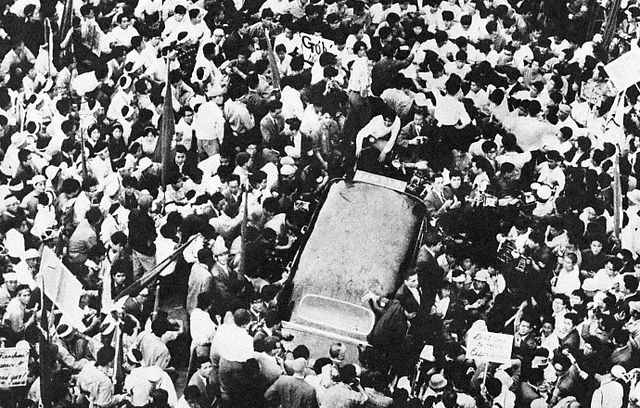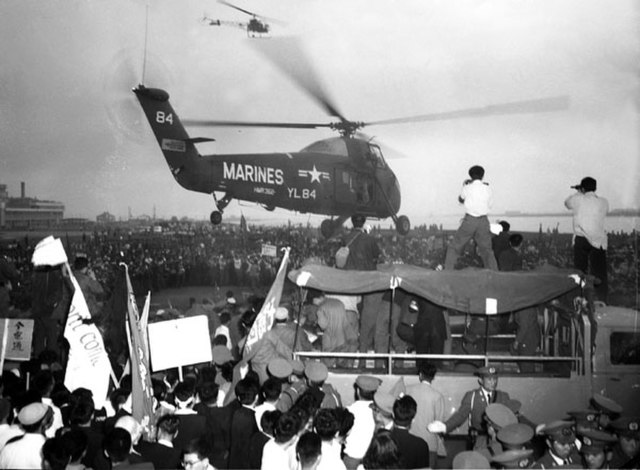1968–1969 Japanese university protests
In 1968 and 1969, student protests at several Japanese universities ultimately forced the closure of campuses across Japan. Known as daigaku funsō or daigaku tōsō, the protests were part of the worldwide protest cycle in 1968 and the late-1960s Japanese protest cycle, including the Anpo protests of 1970 and the struggle against the construction of Narita Airport. Students demonstrated initially against practical issues in universities and eventually formed the Zenkyōtō in mid-1968 to organize themselves. The Act on Temporary Measures concerning University Management allowed for the dispersal of protesters in 1969.
JCP leaders Kyuichi Tokuda, Sanzō Nosaka and Yoshio Shiga (from left to right) immediately following the end of the Second World War
9th Central Committee Convention of Zengakuren (1956)
Yasuda Auditorium, one of the most iconic buildings of the University of Tokyo's Hongō campus
A helmet emblazoned with the word "Zenkyōtō"
The Anpo protests, also known as the Anpo struggle in Japanese, were a series of massive protests throughout Japan from 1959 to 1960, and again in 1970, against the United States–Japan Security Treaty, which allows the United States to maintain military bases on Japanese soil. The name of the protests comes from the Japanese term for "Security Treaty," which is Anzen Hoshō Jōyaku (安全保障条約), or just Anpo (安保) for short.
Masses of protestors flood the streets around Japan's National Diet building, June 18, 1960
A scrum at the rostrum of the National Diet, as Japan Socialist Party Diet members attempt to prevent Speaker of the Lower House Ichirō Kiyose from calling for a vote on extending the Diet Session, while being restrained by police officers, May 19, 1960
Hagerty's car is mobbed by protestors, June 10, 1960
A U.S. Marines helicopter comes to Hagerty's rescue, June 10, 1960








